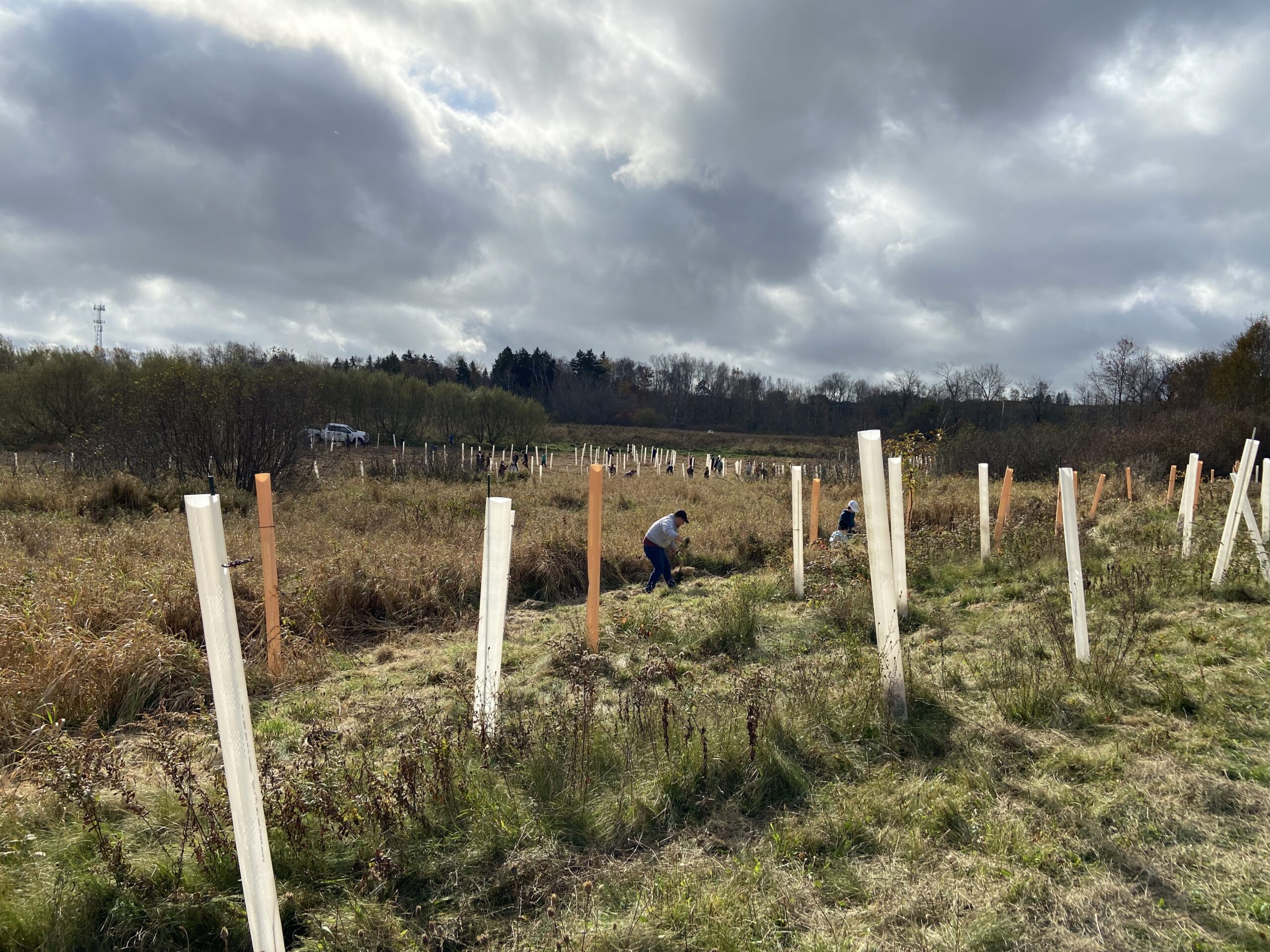Grow with the flow: How planting helps mitigate floods in the Wolastoq watershed
As one of the first colonial settlements in Canada, New Brunswick has had a long history of environmental degradation with ever-worsening floods caused by deforestation, resource extraction and other human activities. This has pushed the region’s ecosystems into disrepair and nearly 50 wildlife species to the brink of extinction.
Home to the Wolastoqiyik people since time immemorial, the Wolastoq (Saint John River) watershed is heavily burdened by these human-caused stressors even as people and wildlife alike still depend heavily on its 700-kilometre stretch of riverbends and banks.
Great importance has been placed on restoring the Wolastoq with hundreds of projects funded and implemented by various institutions. Part of these restoration efforts involve revegetation with trees and shrubs — but not all planting activities are created equal.

After decades spent clearcutting mixed-wood natural forests, industry tree-planters replaced them with monoculture softwood plantations composed of a handful of in-demand species to maximize profit. The assumption had been that as long as a natural forest was replaced by planting other trees, the rest of the plants and animals would fill back in. But research has shown that’s simply not the case.
This is why WWF-Canada focuses on planting the “right tree in the right place.” By working closely with watershed organizations, we can ensure the tree and shrub species that our partners are planting in the Wolastoq are hyperlocal, site appropriate (i.e., flood-tolerant species near water), and resilient to the warmer temperatures and drier conditions resulting from climate change.

Benefits of Watershed Restoration
- Helps mitigate flooding because roots absorb water. Some species being planted in the Wolastoq are water hogs — the silver maple can absorb over 200 litres of water per hour.
- Stabilizes riverbanks and minimizes soil erosion by reducing the impact of rain, absorbing water and binding the soil to reduce runoff. Planting shrubs like cranberry and dogwood, in addition to trees, creates a more complex root system that better holds soil.
- Provides shade over rivers, helping the water stay cooler in the face of climate change and therefore more livable for aquatic species. Some shady trees include cherry, alder, and basswood.
- Sequesters carbon through photosynthesis. Some trees, like oak and cedar, can live up to 300 years and the older a tree gets, the more carbon it can store.
- Propagates local at-risk species, like the butternut tree, and local species important to Indigenous communities, like ash.
With WWF-Canada’s support, our partners at the Nashwaak Watershed Association Inc., Kennebecasis Watershed Restoration Committee, Oromocto River Watershed Association Inc., Atlantic Coastal Action Program Saint John, and the New Brunswick Aboriginal People’s Council aim to plant 65,000 trees in the Wolastoq by March 2025.
Over the past year, our partners have planted over 17,000 trees and shrubs and will be working harder than ever during the upcoming field season to achieve our planting goal.
This project was undertaken with the financial support of the Government of Canada through the 2 Billion Trees program and Environment and Climate Change Canada, Hewitt Foundation and by Wawanesa Insurance through their Climate Champions program.
Are you from New Brunswick and want to get involved? Check our partners’ social media pages for volunteer planting opportunities! If you’re from other parts of Canada, you can still do your part through re:grow and start growing your own native plants.
